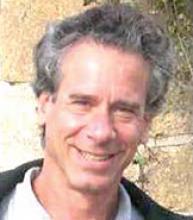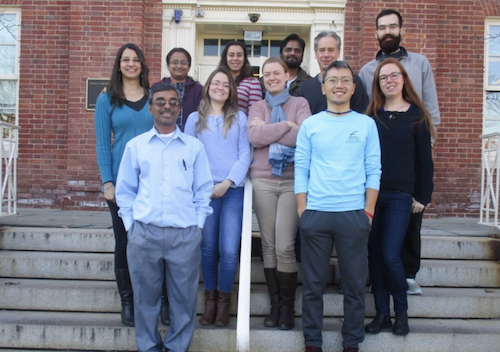Intracellular Parasite Biology Section
David Sacks, Ph.D.
Chief, Intracellular Parasite Biology Section

Major Areas of Research
- Study of parasite and sand fly molecules controlling the development of transmissible infections in the vector
- Development of vaccines against leishmaniasis and their evaluation using infected sand fly challenge
- Mechanisms of acquired resistance in cutaneous leishmaniasis and those controlling persistent infection
- Mechanisms underlying pathogenesis and immunosuppression in human visceral leishmaniasis and development of host-directed therapies
- Study of sexual reproductive strategies in Leishmania and the development of forward genetic approaches to identify virulence genes
Program Description
Research in the Intracellular Parasite Biology Section (IPBS) focuses on the immunology and cell biology of leishmanial infections and the biology of Leishmania parasites within their mammalian hosts and sand-fly vectors. The research may have relevance to diseases, such as tuberculosis, caused by other intracellular pathogens or to other vector-borne diseases, such as malaria.
The IPBS is composed of an interdisciplinary group of immunologists, cell biologists, entomologists, and computational biologists conducting basic and translational research aimed at the following:
- Understanding molecular interactions at the sand fly-Leishmania interface that control the development of transmissible infections, including the role of insect microbiota
- Exploiting a recently identified sexual cycle of Leishmania during their development in the sand fly vector to investigate sexual recombination as a key reproductive strategy to generate diversity, and to identify genes controlling important traits, such as virulence, tissue tropism, and drug resistance
- Understanding the role of myeloid subsets in the skin development of severe cutaneous pathology due to L. major
- Understanding the mechanisms underlying the immunologic defects in patients with visceral leishmaniasis in India, focusing on the role of IL-10 and its inhibition as an approach to therapy
- Identifying the important human infection reservoirs for transmission of visceral leishmaniasis in India
Biography
Education
Ph.D., Harvard University
Dr. Sacks obtained his Ph.D. from Harvard University for studies on immune responses to chlamydial infections. Following a postdoctoral fellowship at the National Institute for Medical Research in London (Mill Hill) studying immune suppression in African trypanosomiasis, he joined the Laboratory of Parasitic Diseases in 1980. He became a senior investigator in 1986.
Selected Publications
Akopyants NS, Kimblin N, Secundino N, Patrick R, Peters N, Lawyer P, Dobson DE, Beverley SM, Sacks DL. Demonstration of genetic exchange during cyclical development of Leishmania in the sand fly vector. Science. 2009 Apr 10;324(5924):265-8.
Peters NC, Egen JG, Secundino N, Debrabant A, Kimblin N, Kamhawi S, Lawyer P, Fay MP, Germain RN, Sacks D. In vivo imaging reveals an essential role for neutrophils in leishmaniasis transmitted by sand flies. Science. 2008 Aug 15;321(5891):970-4.
Louradour I, Ferreira TR, Ghosh K, Shaik J, Sacks D. In Vitro Generation of Leishmania Hybrids.
Cell Rep. 2020 Apr 14;31(2):107507. doi: 10.1016/j.celrep.2020.03.071.PMID: 32294444
Sacks DL. Vaccines against tropical parasitic diseases: a persisting answer to a persisting problem. Nat Immunol. 2014 May;15(5):403-5.
Lee SH, Chaves MM, Kamenyeva O, Gazzinelli-Guimaraes PH, Kang B, Pessenda G, Passelli K, Tacchini-Cottier F, Kabat J, Jacobsen EA, Nutman TB, Sacks DL.
M2-like, dermal macrophages are maintained via IL-4/CCL24-mediated cooperative interaction with eosinophils in cutaneous leishmaniasis. Sci Immuno. 2020 Apr 10;5(46):eaaz4415. doi: 10.1126/sciimmunol.aaz4415.
Research Group

Members of the Intracellular Parasite Biology Section, 2019

